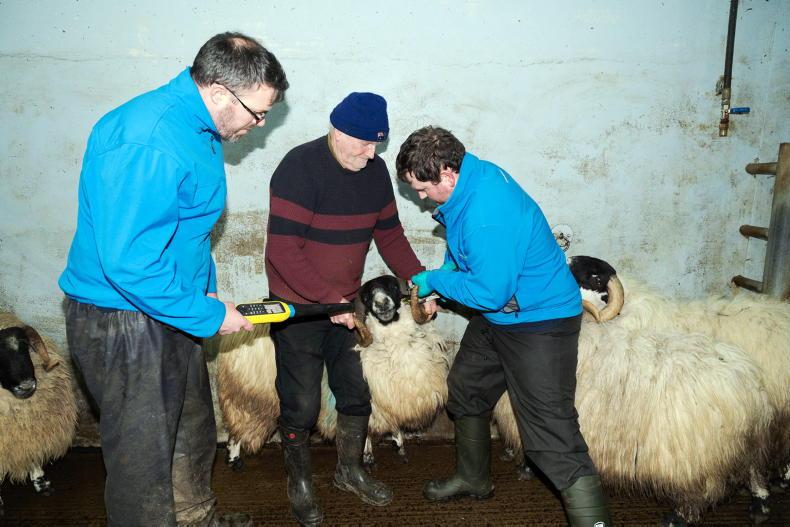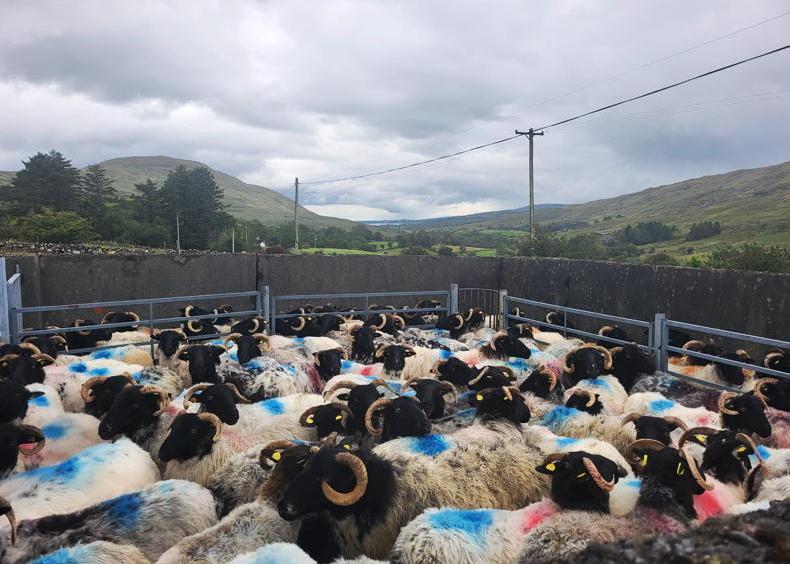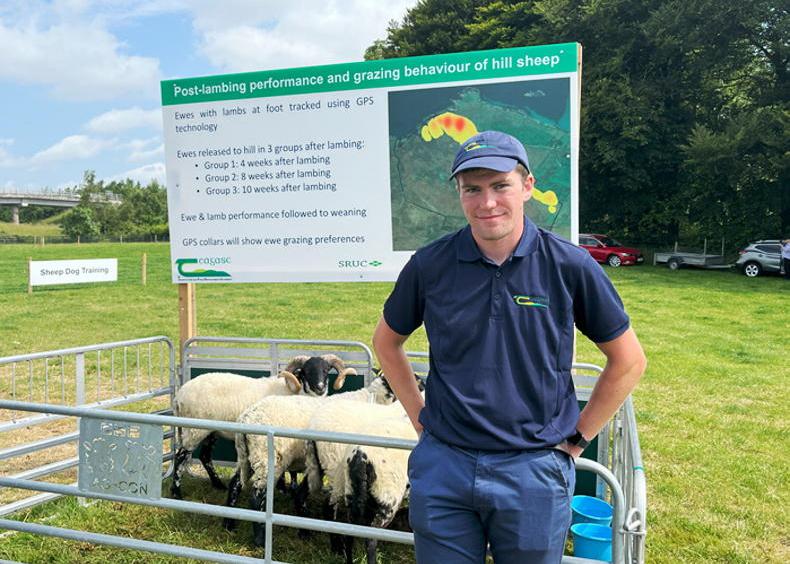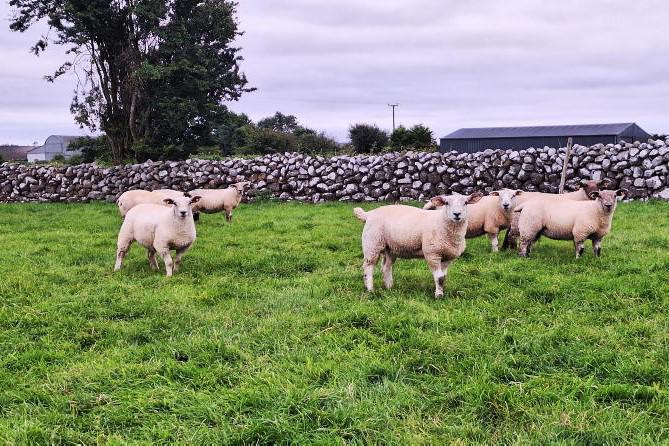Breeders of Sheep Improvement Scheme (SIS) eligible hill rams will be buoyed by the news that demand for such rams is forecast to jump by 75% in 2024.
This was one of the standout messages from Sheep Ireland’s David Coen at last week’s Teagasc hill sheep conference held in Glendalough, Co Wicklow.
David told farmers that there will be a further 40% increase in demand in 2025, with a greater number of hill sheep participants in the SIS opting to complete the mandatory action of purchasing a genotyped ram in years two and three of the scheme.
He highlighted that this will provide ample opportunity for breeders to capitalise on growing demand.
However, he cautioned that it is not just a matter of breeders genotyping rams – care must be taken to ensure that rams have the best chance of meeting eligibility criteria.
Genotyping results
An analysis of genotyping results for rams born in 2022 and genotyped in 2023 was used to expand this message. Figure 1 details that there were 1,889 2022-born hill rams genotyped in 2023.
Some 32.4% of these rams, or 611 head, failed to qualify for the scheme by merit of not having their sire genotyped.
Breeders hoping to breed SIS-eligible rams in 2024, who have not genotyped rams used for mating in 2023, are being urged to genotype all rams used in their flock as soon as possible.
Where rams are not genotyped, then there is a risk through stock rams dying, fallen on the hill or mountain, etc, of their progeny never being in a position to qualify as SIS-eligible rams.
DNA collection days have resumed, with the aim of genotyping 2023-born rams and stock rams, and breeders are being encouraged to avail of these events or to contact Sheep Ireland to organise genotyping.
There were just 230 hill stock rams genotyped pre-2023, with this figure now standing in the region of almost 5,000 rams across 10 breed types
Another 7.9% of rams, or 150 rams, failed because genotyping uncovered they were classified as type 4 or type 5 for scrapie status.
Under the scheme, only type 1, 2 or 3 scrapie status rams are eligible for inclusion.
Scrapie status
The progress made since genotyping ramped up has been impressive.
There were just 230 hill stock rams genotyped pre-2023, with this figure now standing in the region of almost 5,000 rams across 10 breed types and from all ages, ranging from 2011 to 2023.
An analysis of scrapie status (approved by the Department of Agriculture) of genotyped sheep was presented at the conference and is detailed in Table 1.
David explains that it had been expected that the scrapie status of hill sheep would be in a poorer position compared to lowland animals, based on the results of genotyped lowland animals and hill sheep genotyped prior to 2023.
However the results of the larger cohort of animals genotyped in 2023 show that the percentage of type 4 and type 5 animals was 2% higher than expected at 7.6%.
There is also a significantly higher percentage of hill sheep recorded with type 3 scrapie status.
David says the importance of identifying scrapie status is critical to allow future breeding programmes to be managed in a manner that reduces the risk of scrapie.
As detailed in Table 1, there is huge scope to bring about improvement within excess of 66% of purebred lowland animals categorised as type 1.
Inbreeding coefficient
Another worry identified via genotyping is an increasing level of inbreeding.
Table 2 details the inbreeding coefficient by age. This has been trending in the wrong direction and will continue to do so without the establishment of a well organised breeding programme.
The risk is higher in certain breeds as outlined in Table 3.
The lower the figure, the lower the risk of inbreeding is within a breed.
For example, the Lanark breed had the highest inbreeding coefficient across Lanark sheep genotyped while the Mayo/Connemara and Dingle Scotch strains of the Scottish Blackface breed had the lowest recording inbreeding coefficient among sheep genotyped.

John Anthony Cannon from Dunlewy with Sean Godfrey and David Coen scanning and taking DNA samples -Sheep Ireland taking samples of ram DNA at Stranorlar and Ballybofey Livestock Mart on Friday last. \ Clive Wasson.
David explains that the results of genotyping and fact that sire information can now be printed in sales catalogues provides huge scope to tackle inbreeding.
An example was presented at the conference whereby a breeder purchased rams across two years in three different sales with the aim of maintaining a diverse gene pool.
Sire information was unavailable at the time of purchase but the results of genotyping showed that the sire of the three rams was identical.
Genotyping can greatly cut down on the risk of this occurring and breeders should now be looking for this data when purchasing rams irrespective of whether they are purchasing rams for the SIS or not.
Big gains have been made in hill sheep genetics with almost 5,000 rams now genotyped.Demand for genotyped rams is expected to increase by 75% in 2024Genotyping is providing valuable information on sire identification, scrapie status and inbreeding.Genotyping is also providing baseline data from which to develop a hill breeding programme.
Breeders of Sheep Improvement Scheme (SIS) eligible hill rams will be buoyed by the news that demand for such rams is forecast to jump by 75% in 2024.
This was one of the standout messages from Sheep Ireland’s David Coen at last week’s Teagasc hill sheep conference held in Glendalough, Co Wicklow.
David told farmers that there will be a further 40% increase in demand in 2025, with a greater number of hill sheep participants in the SIS opting to complete the mandatory action of purchasing a genotyped ram in years two and three of the scheme.
He highlighted that this will provide ample opportunity for breeders to capitalise on growing demand.
However, he cautioned that it is not just a matter of breeders genotyping rams – care must be taken to ensure that rams have the best chance of meeting eligibility criteria.
Genotyping results
An analysis of genotyping results for rams born in 2022 and genotyped in 2023 was used to expand this message. Figure 1 details that there were 1,889 2022-born hill rams genotyped in 2023.
Some 32.4% of these rams, or 611 head, failed to qualify for the scheme by merit of not having their sire genotyped.
Breeders hoping to breed SIS-eligible rams in 2024, who have not genotyped rams used for mating in 2023, are being urged to genotype all rams used in their flock as soon as possible.
Where rams are not genotyped, then there is a risk through stock rams dying, fallen on the hill or mountain, etc, of their progeny never being in a position to qualify as SIS-eligible rams.
DNA collection days have resumed, with the aim of genotyping 2023-born rams and stock rams, and breeders are being encouraged to avail of these events or to contact Sheep Ireland to organise genotyping.
There were just 230 hill stock rams genotyped pre-2023, with this figure now standing in the region of almost 5,000 rams across 10 breed types
Another 7.9% of rams, or 150 rams, failed because genotyping uncovered they were classified as type 4 or type 5 for scrapie status.
Under the scheme, only type 1, 2 or 3 scrapie status rams are eligible for inclusion.
Scrapie status
The progress made since genotyping ramped up has been impressive.
There were just 230 hill stock rams genotyped pre-2023, with this figure now standing in the region of almost 5,000 rams across 10 breed types and from all ages, ranging from 2011 to 2023.
An analysis of scrapie status (approved by the Department of Agriculture) of genotyped sheep was presented at the conference and is detailed in Table 1.
David explains that it had been expected that the scrapie status of hill sheep would be in a poorer position compared to lowland animals, based on the results of genotyped lowland animals and hill sheep genotyped prior to 2023.
However the results of the larger cohort of animals genotyped in 2023 show that the percentage of type 4 and type 5 animals was 2% higher than expected at 7.6%.
There is also a significantly higher percentage of hill sheep recorded with type 3 scrapie status.
David says the importance of identifying scrapie status is critical to allow future breeding programmes to be managed in a manner that reduces the risk of scrapie.
As detailed in Table 1, there is huge scope to bring about improvement within excess of 66% of purebred lowland animals categorised as type 1.
Inbreeding coefficient
Another worry identified via genotyping is an increasing level of inbreeding.
Table 2 details the inbreeding coefficient by age. This has been trending in the wrong direction and will continue to do so without the establishment of a well organised breeding programme.
The risk is higher in certain breeds as outlined in Table 3.
The lower the figure, the lower the risk of inbreeding is within a breed.
For example, the Lanark breed had the highest inbreeding coefficient across Lanark sheep genotyped while the Mayo/Connemara and Dingle Scotch strains of the Scottish Blackface breed had the lowest recording inbreeding coefficient among sheep genotyped.

John Anthony Cannon from Dunlewy with Sean Godfrey and David Coen scanning and taking DNA samples -Sheep Ireland taking samples of ram DNA at Stranorlar and Ballybofey Livestock Mart on Friday last. \ Clive Wasson.
David explains that the results of genotyping and fact that sire information can now be printed in sales catalogues provides huge scope to tackle inbreeding.
An example was presented at the conference whereby a breeder purchased rams across two years in three different sales with the aim of maintaining a diverse gene pool.
Sire information was unavailable at the time of purchase but the results of genotyping showed that the sire of the three rams was identical.
Genotyping can greatly cut down on the risk of this occurring and breeders should now be looking for this data when purchasing rams irrespective of whether they are purchasing rams for the SIS or not.
Big gains have been made in hill sheep genetics with almost 5,000 rams now genotyped.Demand for genotyped rams is expected to increase by 75% in 2024Genotyping is providing valuable information on sire identification, scrapie status and inbreeding.Genotyping is also providing baseline data from which to develop a hill breeding programme. 










SHARING OPTIONS